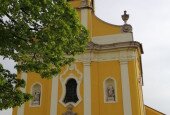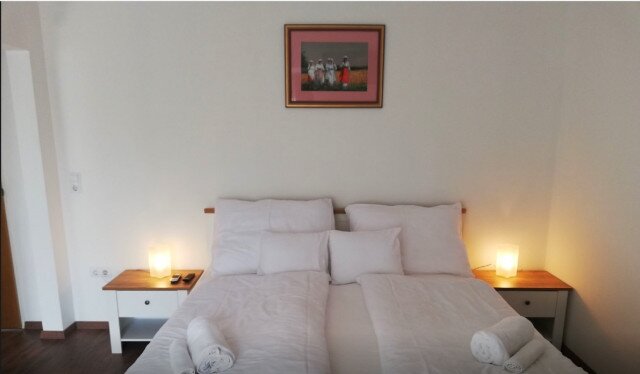Kópháza
Documents from the 13th century mention two villages in the present territory of Kópháza, called Ravaszdvíz and Tarnavíz. In 1354, Sopron citizen Péter Kolb was the owner of the village, hence it was named Kolbenhof. The Hungarian name "Kolphaza is first found in a document dated 1429. The population of Croatian nationality was settled in Kópháza (Croatians of Gradiste) by the Nádasdy counts in the middle of the 16th century. The Croatian heritage is still preserved in cuisine and culture of the village, which is still mostly inhabited by Croatians.
Attractions:
Croatian Country House: The building that functions as the Kópház Country House may have been built in the 1860s. It consists of three building parts, together presenting the old way of life. The houses were built entirely on the border of the plot, sometimes 2-3 buildings stood in a row on one plot, so several families lived together in one courtyard. This architectural form was characteristic of both the German and Croatian minorities in the Kisalföld area.
St. Martin's Church: The old parish church of the village stood in the cemetery. After its demolition, today's "small church" dedicated to St. Martin was built in the centre of the village. Among the worshipers of St. Martin, this church is particularly interesting because of the unique murals of the Sopron painter Kázmér Wosinszky (1895 - 1967). The church is also part of the pilgrimage route of St. Martin.
Local history study trail, Kő-hill lookout tower: The local history study trail presents the past, traditions and life of the Croatians living in Kópháza through 4 information boards. In
Local history exhibition: In the attic of the Mayor's Office you can see the collection created by the local government and the Alpokalja-Fertőtáj Rural Development Association. The exhibition "Tie and Beyond - The History of Croatians in Western Hungary" reveals the culture and history of the Croatian nationality in western Hungary.
Church of Our Lady in Sarlós: The baroque church from the second half of the 18th century was built with the support of Count Antal Széchényi. The church was the venue of the wedding of Count Ferenc Széchényi and Countess Julianna Festetics in 1777. The special feature of the marriage is that the countess was formerly the wife of Ferenc Széchényi's brother, József, who died in 1774. Ferenc Széchényi could only marry his brother's widow with the permission of the Pope. For centuries, the church has been the only pilgrimage site of the Black Madonna of Loretto (Lorettom, today: Austria) in Hungary.
“Ferenc Nádasdy III - who was called the “Hungarian Croesus” because of his wealth - had a daughter, Eleonora, who was often sick, so she frequently visited the wooden chapel in the Kópháza forest to pray to the statue of the Black Madonna of Loretto. She swore that if she recovered from her illness, she would join a monastery. Eleonora was healed but her parents wanted their young daughter to marry. Since she didn't want to break her pledge, she prayed at her wedding to god to take her away. Then a sudden storm came, and Eleonora was struck by lightning and died immediately. Her father built a stone chapel in place of the wooden one where his daughter had taken her vow."





